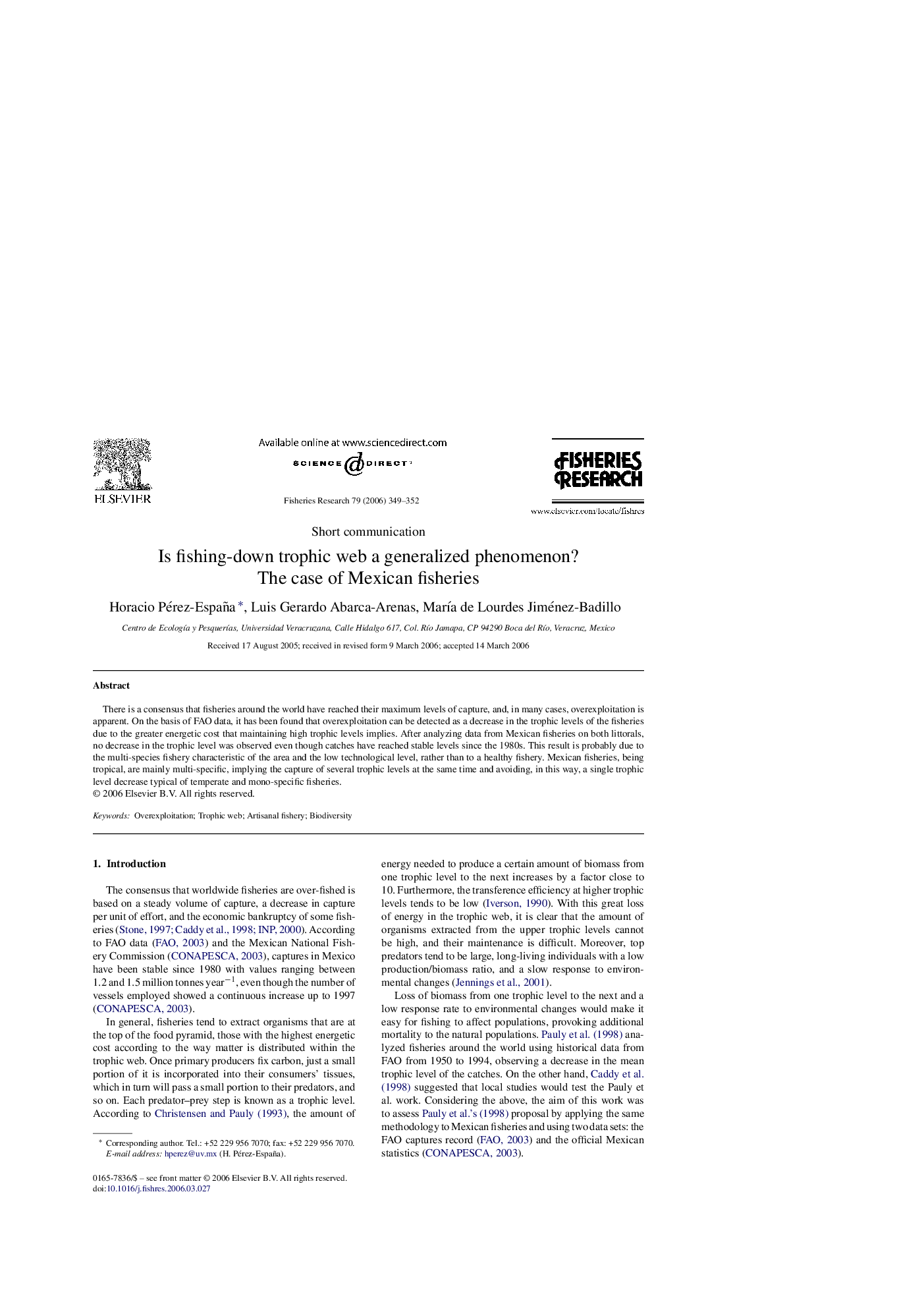| Article ID | Journal | Published Year | Pages | File Type |
|---|---|---|---|---|
| 4544944 | Fisheries Research | 2006 | 4 Pages |
There is a consensus that fisheries around the world have reached their maximum levels of capture, and, in many cases, overexploitation is apparent. On the basis of FAO data, it has been found that overexploitation can be detected as a decrease in the trophic levels of the fisheries due to the greater energetic cost that maintaining high trophic levels implies. After analyzing data from Mexican fisheries on both littorals, no decrease in the trophic level was observed even though catches have reached stable levels since the 1980s. This result is probably due to the multi-species fishery characteristic of the area and the low technological level, rather than to a healthy fishery. Mexican fisheries, being tropical, are mainly multi-specific, implying the capture of several trophic levels at the same time and avoiding, in this way, a single trophic level decrease typical of temperate and mono-specific fisheries.
